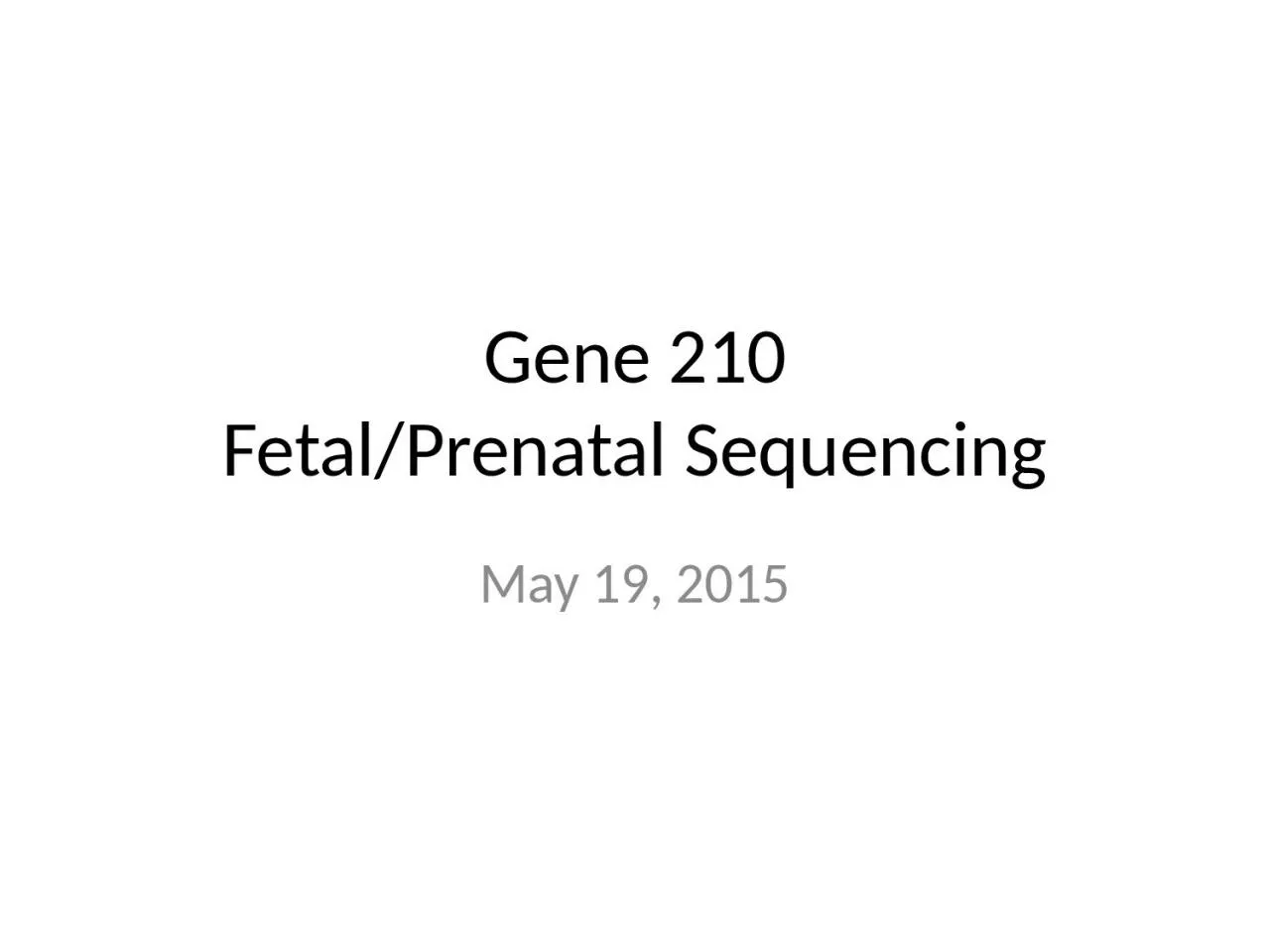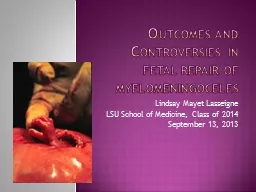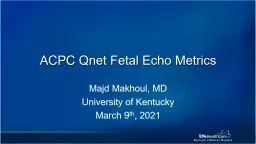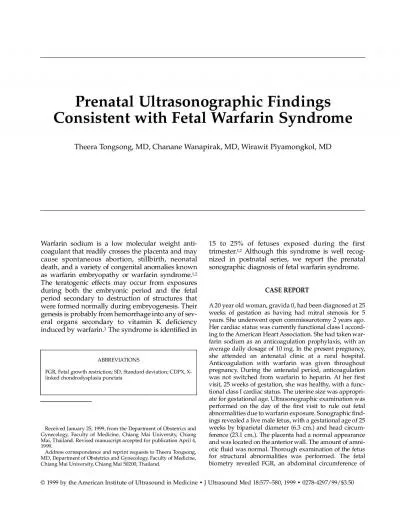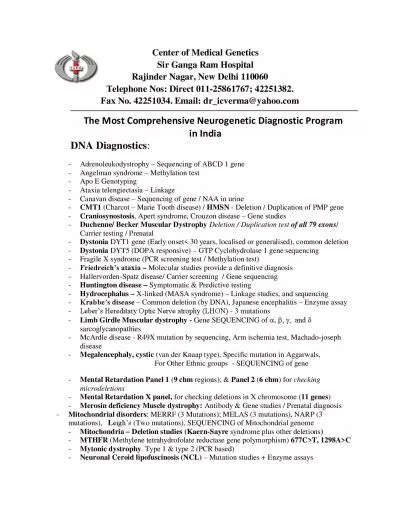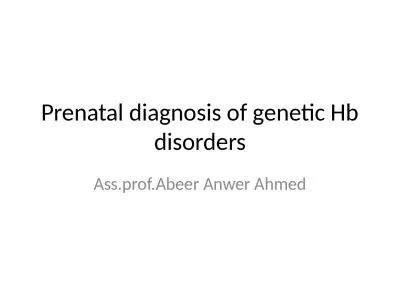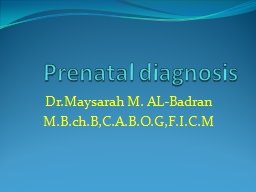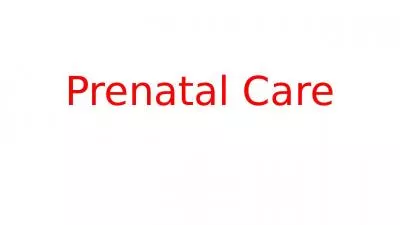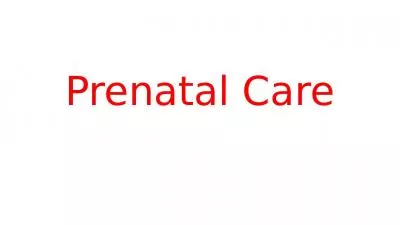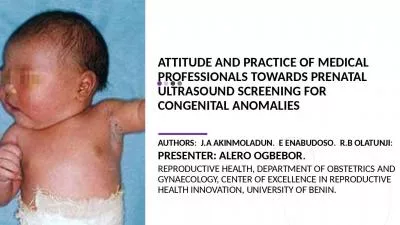PPT-Gene 210 Fetal/Prenatal Sequencing
Author : wilson | Published Date : 2024-01-29
May 19 2015 Todays Plan Innovations in prenatal diagnosis Gitler Anneuploidy Mendelian disorders Noninvasive diagnostic technologies Yair Blumenfeld MD clinical
Presentation Embed Code
Download Presentation
Download Presentation The PPT/PDF document "Gene 210 Fetal/Prenatal Sequencing" is the property of its rightful owner. Permission is granted to download and print the materials on this website for personal, non-commercial use only, and to display it on your personal computer provided you do not modify the materials and that you retain all copyright notices contained in the materials. By downloading content from our website, you accept the terms of this agreement.
Gene 210 Fetal/Prenatal Sequencing: Transcript
Download Rules Of Document
"Gene 210 Fetal/Prenatal Sequencing"The content belongs to its owner. You may download and print it for personal use, without modification, and keep all copyright notices. By downloading, you agree to these terms.
Related Documents

